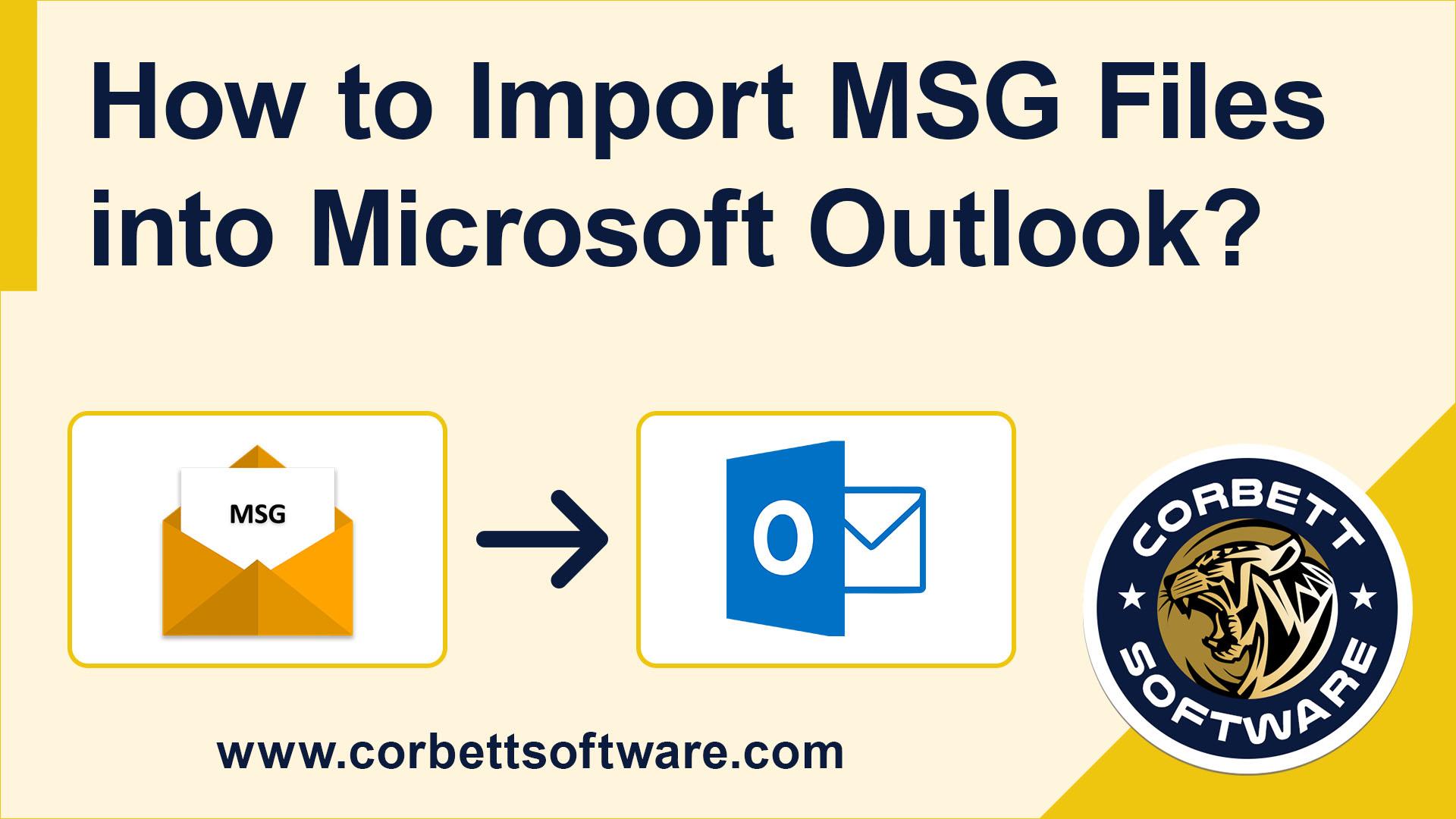
Can changing Outlook settings help in Cannot Open MSG Files on Windows?
Outlook Cannot Open MSG Files in Windows: Did you receive an error message that says cannot open MSG files when accessing the email attachments, and your silent sorrow is unspeakable? You’re not alone! This is a common problem and it can happen due to a variety of reasons including software conflicts, corrupted files, or incorrect file root associations. Here we will see different methods to troubleshoot and rectify this problem. In the end, you will have gained proficiency in using your MSG files.
Understanding MSG Files
Cannot Open MSG Files What are MSG files Before we jump into solutions? The MSG files are individual email messages implemented into Microsoft Outlook. A regular email backup contains information for only one single message that includes text, attachments even meta-data. Now that you know this, it should clarify why they can be so problematic to open.
Most Likely causes of MSG file Corruption
Outdated Outlook version
Not able to work with other email clients
Wrong file associations on Windows
Not enough permissions to open files
Effective Solutions to Fix “Cannot Open MSG Files” in Outlook
1. An online appearance Update Your Outlook Application
You need to update your software regularly for the best experience. Among the problems that may occur, especially with old versions of Outlook one can list the: impossibility of opening MSG files error in Windows.
Open Outlook.
Go to File > Office Account.
Choose Update Options > Update Now.
2. Check File Associations
Other times Windows can hold incorrect file associations not allowing Outlook to open MSG files. To fix this:
Go to any MSG file, right-click on it, and choose Open with.
Select Choose another app.
Scroll down and you will find that Choose 2 Scroll select Outlook, and make sure Always use this app to open mgs. Files.
3. Repair Corrupted Cannot Open MSG Files
Repair the corrupt MSG files by following these steps! Scan and repair via the built-in feature in Outlook.
Control Panel > Programs and Features.
Select Programs and Features.
Search for Microsoft Office, choose \(highlight\) it, and click on Change.
Choose the Repair and follow along with the prompts
4. Disable Add-ins
Sometimes add-ins will cause Outlook not to function properly. You can try disabling those to see if the problem goes away:
Navigate to File>Options > Add-Ins.
Click Go on COM Add-ins.
Go to COM Add-Ins, clear all checkboxes, and then open Outlook again.
5. View Emails in Other Applications — View MSG Files By another Programme
Other software you could leverage are:
MSG Viewer for Windows Free HHS MSG viewer: Opens & Reads MSG files easily without Outlook
Mail Pass View: Also extracts information from * MSG files.
6. Use a Third-Party MSG Repair Tool
First things first, download any of these applications and open the MSG file again.
Choose the Repair and follow along with the prompts
| Tool Name | Features | Price |
|---|---|---|
| Stellar Repair for Outlook | Repairs corrupted Outlook files, easy-to-use | $49.99 |
| Kernel for Outlook PST Repair | Recovers lost emails, supports multiple formats | $49.00 |
Benefits of Resolving MSG File Issues
Addressing the ”cannot open MSG files” issue brings several benefits:
Improved productivity and access to important emails.
Enhanced software performance with regular updates.
Increased data security through regular backups.
Practical Tips to Avoid Future Issues
Always update Microsoft Outlook regularly.
Maintain a clean and organized inbox to reduce file clutter.
Regularly back up your emails and important MSG files.
Conclusion
The “cannot open MSG files” issue in Outlook on Windows can be frustrating, but with the solutions outlined above, you can easily troubleshoot and get back to your important emails. Whether it’s updating your software, checking file associations, or using third-party tools, these tips will help restore your access to MSG files effectively. As always, keeping your Outlook updated and performing regular maintenance can prevent such issues in the future. If you found this article helpful, consider sharing it or leaving a comment below!



Leave a Reply